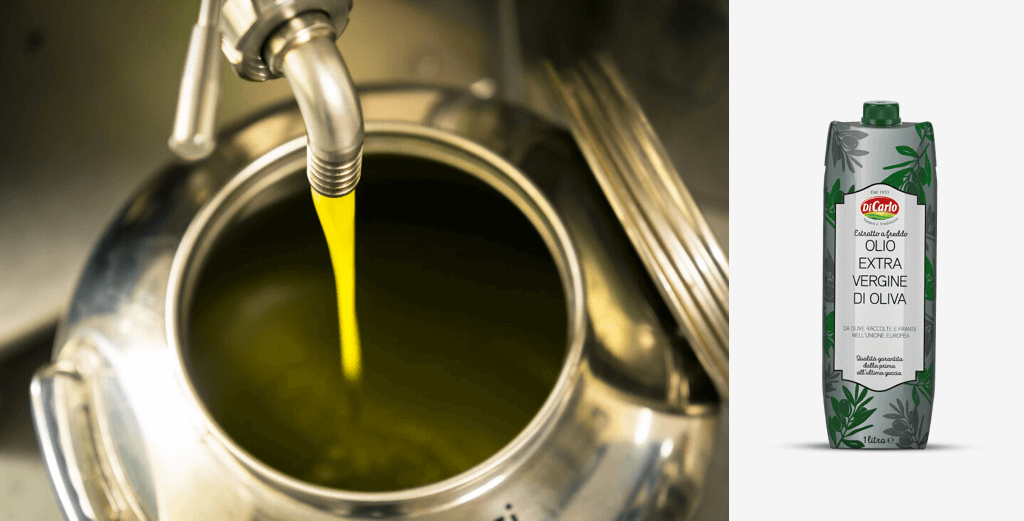How to recognise a good quality extra virgin olive oil
The main aspects that characterize the quality of olive oil are its organoleptic characteristics, oxidation stability, the absence of contaminants (pesticides, phyto-hormones, pesticides …) and, of course, its nutritional characteristics expressed in terms of saturated, monounsaturated and polyunsaturated fatty acids, phytosterols, vitamins and natural antioxidants.

The importance of raw materials
As with any agri-food processing product, the value of oil consists in maintaining and enhancing the characteristics of the raw material of origin, namely olives.
It is impossible to produce a good oil starting from poor raw materials, even using the most sophisticated extraction procedures.
For this reason, in order to produce a quality oil, careful selection of the fruit is essential, since any defect will directly affect the result of pressing. Crops attacked by parasites or affected by frost must be discarded beforehand.
To date, there is still no tool that, based on chemical-physical parameters, is able to evaluate every single component that determines the infinite aromatic tones of an extra virgin olive oil. It is essential to rely on sensory analysis.
Two types of analysis: chemical-physical and sensory
The recognized quality of extra virgin olive oils is the result of two different types of investigation: on the one hand, the chemical-physical analysis, aimed at ascertaining the real composition of fat and its degree of acidity in percentage terms; on the other hand, the organoleptic examination, which judges the oil from the point of view of its visual, olfactory, and taste characteristics, and evaluates its strengths and weaknesses..
The organoleptic characteristics, that is those that we perceive with our senses, allow us to distinguish products that analytic determinations proclaim to be identical.
It is essential to remember that olive oil is the first food product for which sensory analysis, based on the panel test system (a standardized analytical method with a group of trained tasters), constitutes a discriminating commodity factor.
In the C.E.E. it is established that an oil must be subjected to tasting in order to determine, by means of a score, the product category to which it belongs.
A new evaluation method is currently being implemented by the E.U., which no longer specifies a score, but the indication of the perceived intensity for each of the negative and positive attributes.
The classification of olive oil
Olive oil is classified as follows:
- extra virgin olive oil: when the median of the defects is equal to 0 and the median of the fruitiness is greater than 0;
- virgin olive oil: when the median of the defects is greater than 0 and less than or equal to 2.5 and the median of the fruitiness is greater than 0;
- ordinary virgin oil: when the median of defects is greater than 2.5 and less than or equal to 6.0 or when the median of defects is less than or equal to 2.5 and the median of fruitiness is equal to 0
The composition of olive oil
Vegetable oils are made up of glyceride compounds (95-99.7%), monounsaturated, polyunsaturated and saturated acids, and minor compounds (0.3-5%) which play a very important role, from an organoleptic, nutritional and analytical point of view, and in differentiating biological origin and product classification.
The percentage breakdown of fatty acids in olive oil is:
- Saturated fatty acids 4.3%
- Monounsaturated fatty acids 77.0% of which: oleic acid 75.7%
- Polyunsaturated fatty acids 8.7% of which: linoleic acid 8.1% linolenic acid 0.6%
What does the colour of olive oil depend on?
A large number of liposoluble pigments such as xanthophylls, chlorophylls, carotenes and carotenoids contribute to the formation of the colour of an olive oil.
When chlorophylls prevail, we attain green oils, while a majority of carotenes and carotenoids will give more intense yellow coloured oils.
Aromas
The aromatic nuances perceptible with the nose and mouth are determined by multiple volatile aromatic compounds and polyphenols. These substances derive from special compounds present in olives which, following hydrolytic processes, become partially soluble in oil.
In many freshly pressed oils, bitterness, spice and astringency tend to prevail, and typical notes are attributed to the abundance of flavonoids and secoiridoids.

